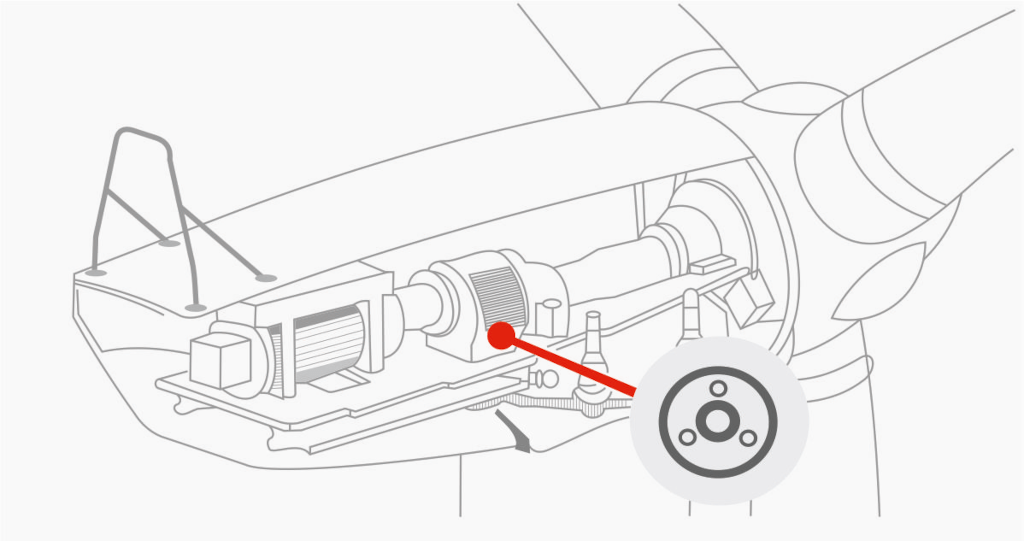Condition-Based Oil Changes: Save Money and Protect the Environment
 Protecting the climate and saving energy and resources are topics that are right on trend. Almost every company is working hard to reduce its carbon footprint. Meanwhile, with manufacturing costs only rising in recent months, returning a profit is becoming increasingly difficult. Savings, wherever possible, are on everyone’s agenda, and all operational processes are being put in the spotlight. Too often, however, little attention is paid to lubricants. Even if higher-quality premium lubricants are used for the first time, they are often replaced far too early because they have always been changed at fixed intervals or because it has been stipulated by the oil supplier.
Protecting the climate and saving energy and resources are topics that are right on trend. Almost every company is working hard to reduce its carbon footprint. Meanwhile, with manufacturing costs only rising in recent months, returning a profit is becoming increasingly difficult. Savings, wherever possible, are on everyone’s agenda, and all operational processes are being put in the spotlight. Too often, however, little attention is paid to lubricants. Even if higher-quality premium lubricants are used for the first time, they are often replaced far too early because they have always been changed at fixed intervals or because it has been stipulated by the oil supplier.
However, when lubricants are monitored properly (e.g., using OELCHECK all-inclusive analysis kits), they can be changed based on their actual condition. At the same time, the analyses detect contaminants and any wear processes, ensuring the systems’ operational safety. This means the cost-effective analyses pay for themselves in short time.
If oils are changed based on their condition instead of at fixed intervals, you’ll be doing your bit for the environment. Fewer oil changes mean:
 Less need for fresh oil
Less need for fresh oil- Less oil extraction and crude oil transport
- Fewer energy-intensive refinery processes
- Less transport of fresh and used oils
- Less reprocessing or disposal of used oils
The bottom line is that fewer oil changes reduce the formation of CO2. The production and disposal of lubricants alone creates CO2 emissions of approximately 1.5kg CO2 per liter of oil. However, fewer unnecessary oil changes also have an additional effect that should not be underestimated, particularly in today’s climate — they have a positive effect on the cost balance sheet. We illustrate the amounts involved using two practical examples.
3MW Wind Turbine — Main Gearbox
 The components in a wind turbine are hard to access. Inspections, maintenance work and oil changes take place at high altitudes, and failing components result in lengthy operational interruptions. Changing the oil just once costs several thousand euros.
The components in a wind turbine are hard to access. Inspections, maintenance work and oil changes take place at high altitudes, and failing components result in lengthy operational interruptions. Changing the oil just once costs several thousand euros.
Components in a wind turbine require a range of different lubrication oils, greases and coolants. To clarify the cost-benefit balance of condition-dependent oil changes, which are accompanied by oil analyses, only the 1,100 litres of synthetic gear oil that lubricate the planetary gear of a 3MW system have been taken into account in the example.
Analyses of the gear oil carried out every six months have shown that the gear oil’s service life can be doubled from 30,000 operating hours (5-6 years) to 60,000 operating hours (10–12 years).
 |
|
|---|---|
| Initial situation | |
| Component: Planetary gear of a 3MW wind turbine | |
| Gear oil type: Synthetic CLP gear oil ISO VG 320 | |
| Oil volume: 1.100L | |
| Costs per litre of gear oil: Approx €9.50 | |
| Costs for changing the gear oil after 30,000 operating hours Fixed interval; no oil analysis costs |
|
| Gear oil | €10,500 |
| + Loss of production [3MW* €0.2* 6 hours] | €3,600 |
| + Service technician [external]* | €1,500 |
| Total | €15,600 |
| Costs for changing the gear oil after 60,000 operating hours based on 12 OILCHECK all-inclusive analyses | |
| Gear oil | €10,500 |
| + Loss of production [3MW* €0.2* 6 hours] | €3,600 |
| + Service technician [external]* | €1,500 |
| + 12x OELCHECK analysis kits [approx. €80/kit per year] | €960 |
| + 12 x 2-hour service technicians €80/hour for sampling* | €1,920 |
| Total | €18 480 |
| Savings on an oil change after 60,000 operating hours instead of 30,000 operating hours | |
| Total costs for two oil changes every 30,000 operating hours | €31,200 |
| Total costs including oil analyses after 60,000 operating hours + service technician [external]* | €18,480 |
| Cost savings after 60,000 operating hours [10 years] | €12,720 |
| Annual cost reduction | Approx. €1,000 |
| * Values are approximate and rounded | |
Goods Vehicles — Euro 6D Six-Cylinder Diesel Engine
A well-known German freight forwarder is leading the way in reducing CO2 emissions. They have around 150 trucks on their books that run solely on biodiesel (B100), which reduces CO2 emissions by around 80% compared to running on diesel (B7). With an average consumption of 33 litres per 100 kilometres and a mileage of around 120,000 kilometres per year, each heavy goods vehicle emits 70 tons less CO2 each year.
Unfortunately, there’s a catch. Several years of findings relating to running engines on pure, non-esterified rapeseed oil indicate that engine manufacturers still stipulate that B100 engine oils should be changed at shorter intervals. This should eliminate the risk of increased fuel entry when running on B100 and any subsequent damage to the engine. To meet the engine manufacturer’s warranty conditions as defined in the lease contracts, the freight forwarder had to shorten the oil change intervals from the usual 120,000 kilometres to 30,000 kilometres. Shortening the intervals led the cost accounts for oil changes and the CO2 balance sheet to soar due to the following:
- The amount of used and fresh oil increased four-fold
- The costs for changing the oil and the associated downtime quadrupled
- Additional, avoidable CO2 emissions generated during the production, transport and disposal of engine oils
Initial situation
Components: Four Euro 6D six-cylinder diesel engines in long-haul trucks Engine oil type: SAE 5W-30 based on polyalphaolefin and ester; meets the specifications ACEA E4, E6, E7, E9; APICJ-4; JASO DH-2 Oil
volume: 41.5L per engine
Costs for changing the engine oil
Includes fresh oil, oil filter and labour
According to the freight forwarder's specifications €500
Based on the initial situation, the freight forwarder and OELCHECK launched a trial in collaboration with the truck manufacturer.
As part of the test, the engine oils in the four trucks with Euro 6D six-cylinder diesel engines were analysed every 5,000 kilometres. The limit values of the individual parameters were agreed upon with the vehicle manufacturer in advance. In this light, the following values came under particular scrutiny in the OELCHECK lab: any B100 fuel entry into the engine oils, a change in viscosity, oil oxidation and wear parameters. The short analysis intervals of 5,000 kilometres acted as a safeguard so we could intervene at short notice should serious deviations be detected, therefore avoiding significant damage to the engines.
In all four trucks, the engine oils reached the 30,000-kilometer milestone — the point at which an oil change would otherwise have been due, according to the manufacturer’s instructions — without presenting any issues. The oil quality also returned good results at that point. The oil showed signs of ageing in the following 30,000 kilometres (up to 60,000 kilometres). However, this proved to be within scope. As expected, the fuel content in the oil increased throughout the test. The fuel entry was only proven to be moderate in all four vehicles observed, and the viscosity did not change as a result. The limit values agreed with the manufacturer were never reached, while wear metals could only be detected in low concentrations.
| Saving per truck with an extended oil change interval after 90,000 kilometres | |
|---|---|
| Previous costs for two oil changes every 60,000 kilometres 2x€500 | €1,000 |
| Current costs for an extended oil change interval after 60,000 kilometres | €500 |
| Annual cost savings per truck | €500 |
The analysis data showed that the vehicles’ oil should be changed every 90,000 kilometres. To be on the safe side, however, the vehicle manufacturer involved in the test approved extended oil service intervals of up to 65,000 kilometres based on the data established for the haulage vehicles used in long-haul transport.
The freight forwarder, which runs over 150 vehicles on biodiesel (B100), would save over €75,000 in engine oil costs per year due to tripling the oil change intervals as determined by the oil analyses. In addition to the cheaper biodiesel costs, the forwarder would secure a much more favorable cost structure in the much-discussed freight forwarding industry, as well as a better CO2 balance.
